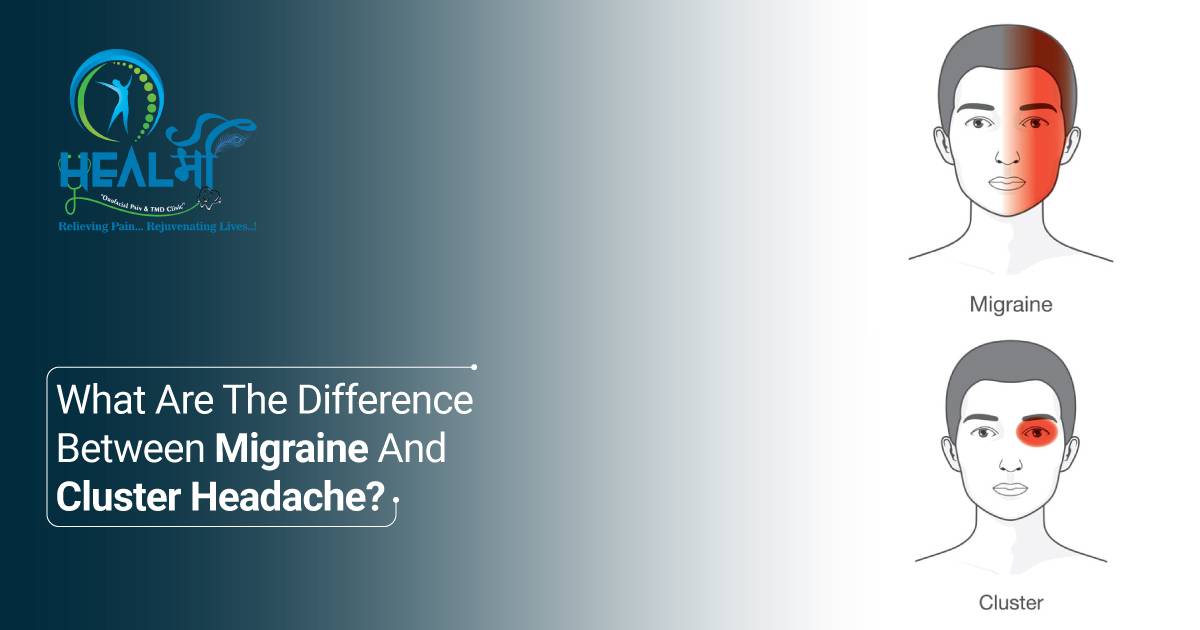What Are The Differences Between Migraine And Cluster Headache?
Home
What Are The Differences Between Migraine And Cluster Headache?

Home
What Are The Differences Between Migraine And Cluster Headache?


If you’ve ever had a strong, pounding headache, you know how quickly it can derail your entire day. But not every headache is the same. Some people deal with migraines, while others face cluster headaches, and although both can be extremely painful, they’re actually quite different. Understanding the difference between migraine and cluster headache can make it easier to manage your symptoms and, more importantly, get the right Migraine and Cluster Headache Treatment in Ahmedabad. Let’s break it down clearly and simply.
Migraines are not just “bad headaches.” They’re frequently referred to as a neurological condition that involves intense pulsing pain, most commonly on one side of the head. In addition to pain, migraines can include nausea and vomiting and sensitivity to light or sound. For a lot of people, migraines don’t just strike out of the blue. Warning lights, also known as auras, come in: flashes of light, zigzag patterns, or tingling in the face and hands. And when a migraine attack gets underway, it can stick around for a few hours or up to three entire days.
Cluster headaches are a different animal entirely. They are not as common as migraines, but if you’ve ever had one, you will tell anyone who will listen that the experience of an ice pick headache is one of the most excruciating things you may experience. The pain is typically sudden, sharp, burning or piercing, and it may occur around one eye or one side of the head.
The name “cluster” refers to the pattern of the way these headaches hit. Instead of random attacks, they come in cycles or clumps, visiting the same person multiple times in a day, over days, weeks or even months. Each episode is brief compared with a migraine (from 15 minutes to three hours, often), but the level of intensity is of another order
Now, let’s get to the heart of the matter: the difference between migraine and cluster headache. Here are the main ways they’re not a like:
| Feature | Migraine | Cluster Headache |
|---|---|---|
| Pain Type | Throbbing, pulsating pain, usually moderate to severe | Sharp, burning, or piercing pain (often described as the "worst pain") |
| Location | One side of the head (can switch sides) | Around or behind one eye, always on the same side |
| Duration of Attack | Several hours to 3 days | 15 minutes to 3 hours |
| Frequency | A few times per month or less | Multiple times a day during cluster periods (weeks to months) |
| Symptoms | Nausea, vomiting, sensitivity to light and sound, aura (visual changes) | Red watery eyes, runny nose, drooping eyelid, sweating on one side of the face |
| Gender Tendency | More common in women | More common in men |
| Triggers | Stress, hormonal changes, certain foods, and lack of sleep | Alcohol, strong smells, seasonal changes, and disturbed sleep |
| Relief/Management | Medications, stress management, sleep hygiene, and avoiding triggers | Oxygen therapy, fast-acting injections, and avoiding triggers |
When you are the one suffering, a headache is a headache, correct? Not quite. It is crucial to know the difference between a migraine and a cluster headache, as the treatment is different.
For example, migraine patients might benefit from drugs that reduce inflammation in the brain or from lifestyle modifications to lower stress and improve sleep. On the other hand, treatments for cluster headache, which is characterised by attacks of extreme and sudden pain, often focus on stop-gap measures like oxygen therapy or targeted injections.
Neither are conditions that are easy to muster up enthusiasm towards for living with. Migraines can leave you feeling as if days of your life are slipping through your fingers, while cluster headaches can be a terrifying harbinger of the next attack. But the distinction between migraine and cluster headache may help you describe your symptoms more accurately to your doctor, and in turn, you can receive focused treatment rather than just guesswork at generic painkillers that may or may not work.
It is also important to log your symptoms. It's helpful to the doctor if you notice patterns — for example, coronary headaches occur in conjunction with your period, or you get flare-ups of cluster headaches every spring.
Ultimately, migraines and cluster headaches are serious conditions that are painful and deserving of serious medical attention. They might have some stuff in common, but once you learn the difference between migraine and cluster headache, it’s clear that they’re not the same beast. If you have either of these, don’t blow it off as “just a headache.” Speak to a health care professional at Healme Pain Clinic and arrange a plan.
Life is too short to spend it in depression and to spend your days sheltered in a dark room or writhing in pain with your head in the grip of a migraine. Being clear on what goes on for real is the first step to regaining some control.